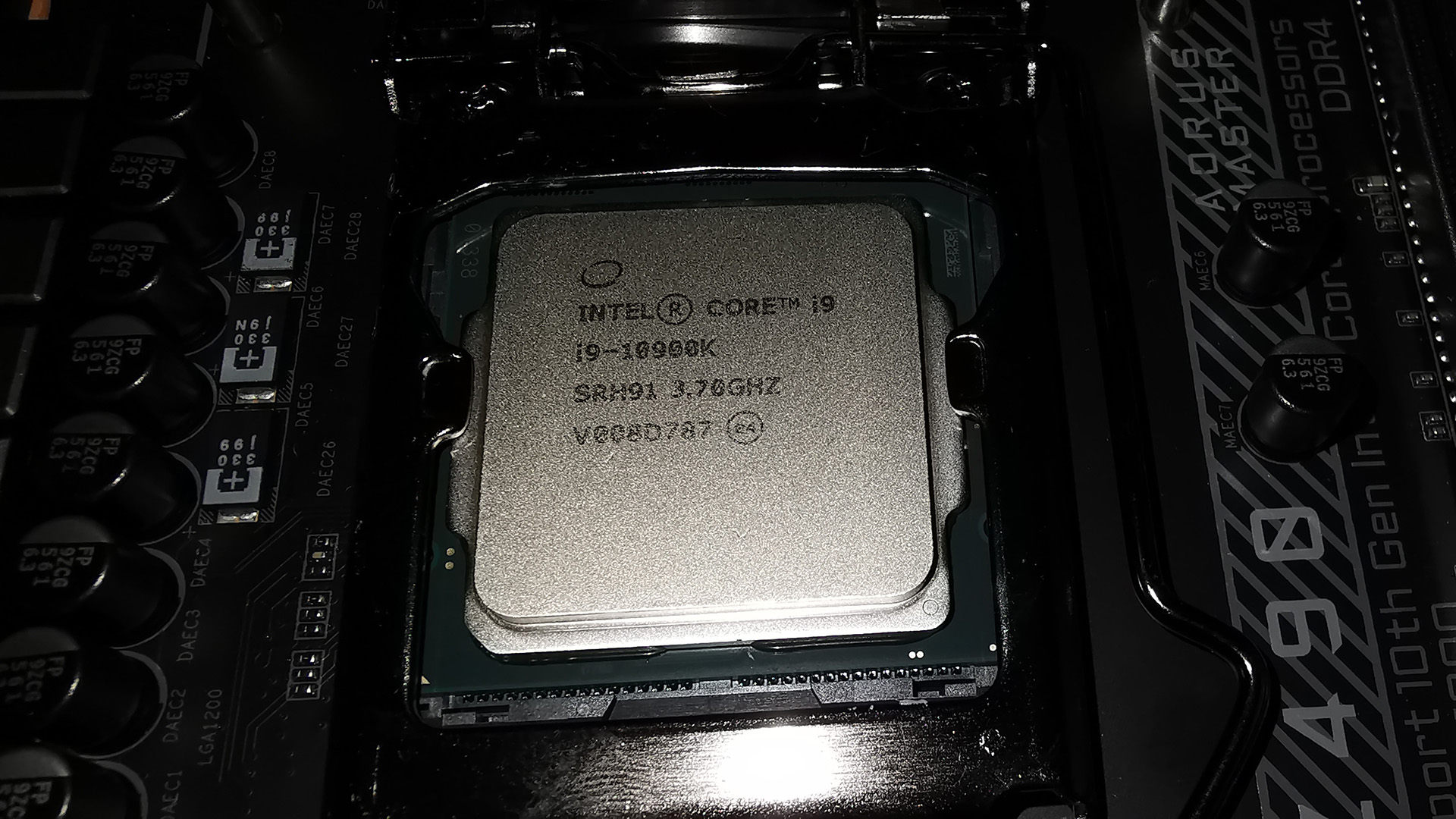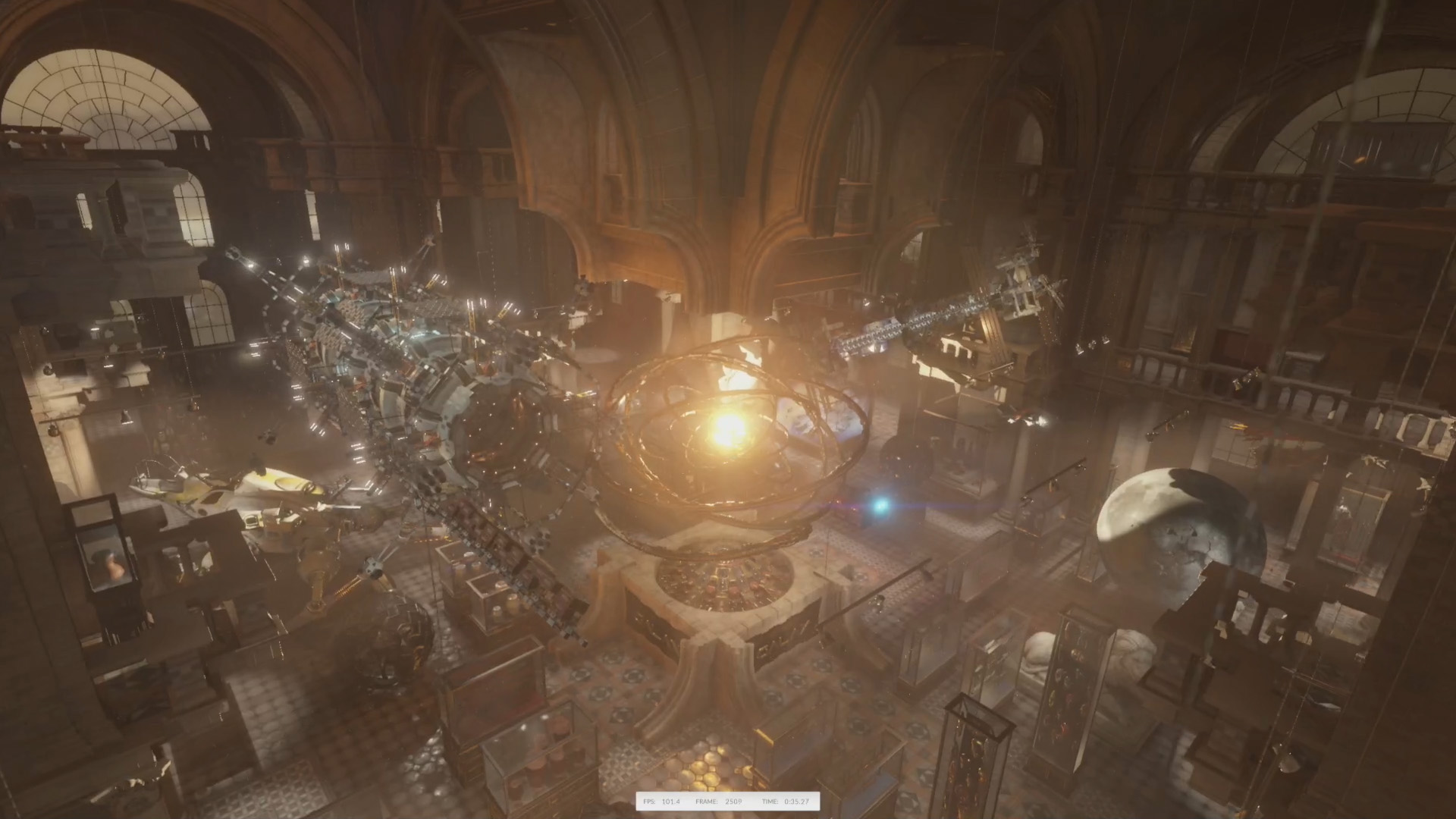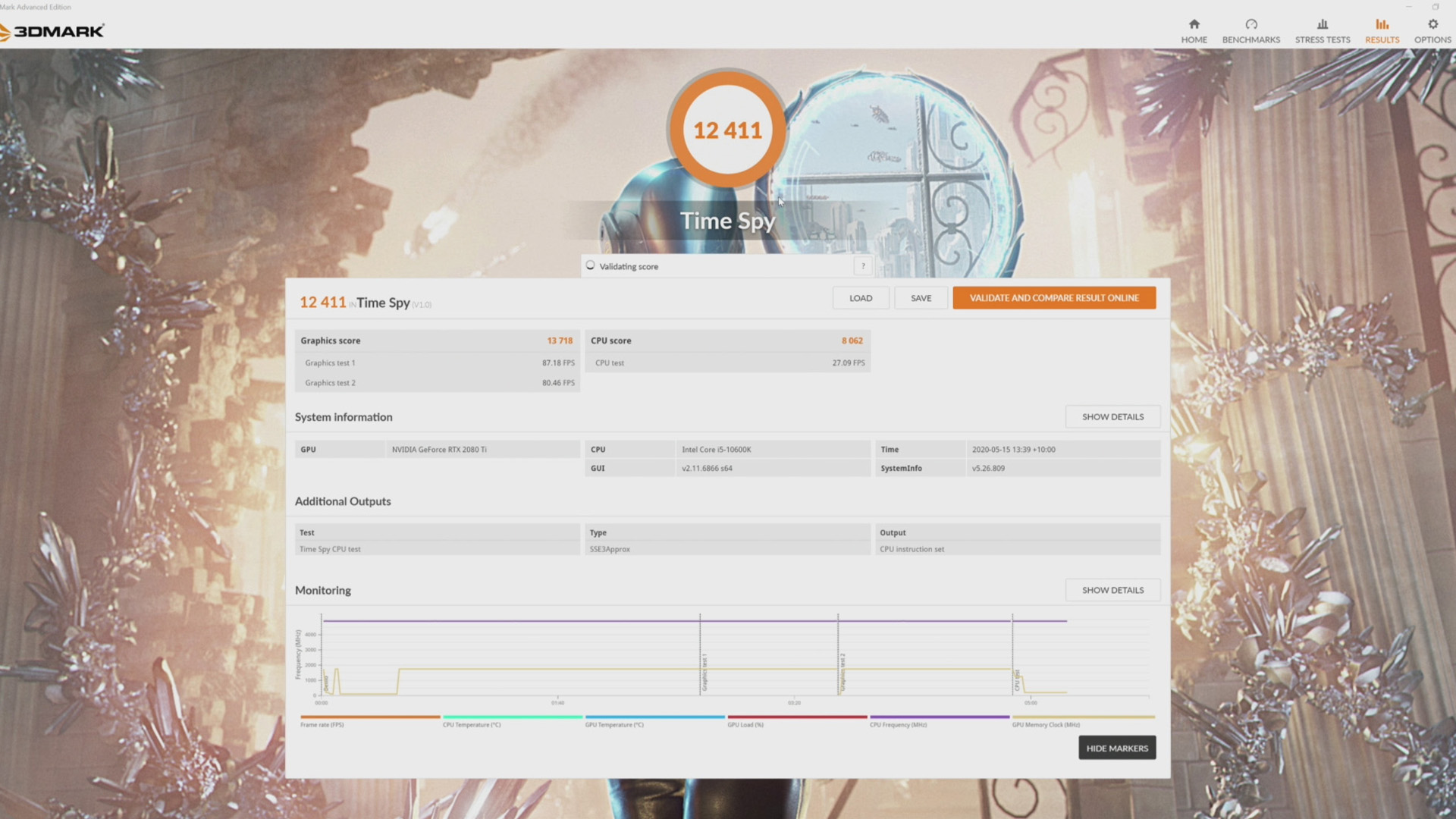Core i5-10600K and Core i9-10900K
Intel are about to unleash their 10th generation Comet Lake desktop microprocessors. These CPUs have been designed very much with PC gaming in mind.
The new range of 14nm CPUs supersedes 2018’s 9th gen Coffee Lake refresh, adding more cores and higher clock speeds. As with their predecessors, Intel’s 10th generation of desktop CPUs range from the budget Celeron to the flagship Core i9.
Intel sent us retail samples of both the top-of-the-range Core i9-10900K and their more modest, but still very capable Core i5-10600K for review. Both CPUs were tested under normal operating conditions, with a few tweaks to see what easy performance enhancement could be obtained.

Gone are the days of huge CPU frequency jumps. Both the Core i5-10600K and the Core i9-10900K are built upon the 14nm Skylake microarchitecture technology from 2015. In recent years, performance gains with each iteration of Intel CPU have dropped off, somewhat. From a consumers point-of view is perhaps a good thing, making upgrading less necessary.
Intel’s processor speeds have been flirting around the 5GHz mark for several years now. It’s only with the Comet Lake CPUs that we are actually going to see 5GHz as almost the norm, without the need for mad overclocking skills. The i5-10600K and especially the i9-10600K rely on the brute force of multiple cores (which are, effectively, what we would once call a CPU back in the single-core Pentium days) to improve performance over their predecessors.
Many of us have been enjoying the use of our Socket 1151 motherboards for several generations of Intel’s desktop CPUs. That’s all over now, as Intel’s 10th generation requires the new LGA 1200 socket with a 400-series chipset. No BIOS firmware upgrade is going to let 10th gen CPU work in your Z390 motherboard.
For the review we were also supplied with a Gigabyte Z490 Aorus Master motherboard. The review CPUs were paired with an Nvidia RTX2080TI GPU and 16 GB of Crucial Ballistix Elite DDR4-3600 RAM. CPU cooling was via a Coolermaster Masterliquid ML240L AIO cooler.

The “K” suffix of the CPUs on test means that their clock multipliers are unlocked and thus likely suitable for overclocking. It is only really the top-end Z490 motherboard chipset that officially permits overclocking. Along with the H470, the Z490 also includes Intel Wi-Fi 6. Z490-based motherboards are likely to be compatible with Intel’s as yet unannounced 11th generation Rocket Lake CPUs.
Whilst you will need to cough-up some doe for a new motherboard, the LGA 1200 socket arrangement is compatible with your existing LGA 1151 CPU cooler. And, of course, your DDR4 memory should also work in the new 400-series motherboards. This takes a bit of the sting out of it, if you are thinking of upgrading to a 10th gen CPU.
Installing the CPUs was very easy. Modern PC component design is practically fool-proof these days. The CPU and motherboard mount are virtually indistinguishable from the last-gen of desktop CPUs. The Z490 motherboard did throw a bit a curve ball at me in that it had two 8-pin 12V CPU power sockets, with the power supply unit that we’d originally allocated to the test. Whilst I am aware that CPUs have in the past still functioned with only one 8-pin supply, I did want to see what sort of performance enhancements, without going silly, I could get out of the CPUs. To properly check the CPUs, we invested in a Gigabtye Aorus 850WPSU.

The Core i5-10600K is aimed at the discerning gamer that wants a superior gaming experience without breaking the bank. If you are not going to be using more intensive applications, like video editing, that are going to benefit from the additional cores offered by the i7s and i9s, the i5 makes good economic sense, coming in at half the price of the i9.
The i5 is not, however, some pedestrian compromise. Teamed up with the RTX 2080TI, it delivered smooth, faultless, gameplay.
It’s a six-core, twelve-thread CPU with a base frequency of 4.1 GHz. By default, running one to two cores, the turbo frequency is raised to 4.8 GHz, for three to four cores the turbo is 4.7 GHz and for five to six active cores the turbo frequency is 4.5 GHz. With one and two cores in use, the CPU may run at the stated max of 4.8GHz. This is, however, very much dependent on the CPU’s thermal velocity boost- which only works if the chip is running cooler than 70-degrees.

More modern games are starting to make use of several cores now that multi-core CPUs are the norm. With three to four cores in use, in order to reduce heat, the max possible frequency, on all cores, drops to 4.7GHz. A majority of games will use four cores, these days. If you have five or all six cores running, the max frequency lowers again to 4.5 GHz.
Getting the CPU to maintain a high frequency over as many cores as possible will deliver the best performance boost. Being able to do so without adding voltage is even better in order to keep the temperature down.
The test rig was running with a fairly ordinary AIO CPU water cooler. This is similar to that which most system builders will use on a decent gaming PC, without going crazy with the cooling. I really wasn’t expecting much in the way of overclocking success. Decent overclocking takes time to carefully push limits to maximise CPU output. Most of the time, unless you really enjoy it, you spend a lot of time to score minor gains.

The object of this review is not really to push the CPUs to breaking point. It’s more of a look at what you get out of the box. That being said, the Z490 motherboard is very feature-rich and asking to tweak the CPU performance.
The Gigabtye Z490 Aorus Master motherboard had an interesting setting in the bios, “CPU Upgrade”, which offered two overclocking setting for those with suitable cooling. The game profile added +1 to the clock ratio and the advanced profile +2 to the clock radio. Switching to the advanced profile, I was able to run all six cores at 4.8GHz without any issue, which is interesting. For the purpose of the benchmarks, this setting was left to the default, rather than the overclocked settings.
Before the formal testing I had a bit of a mess about on a few games to get a real-life feel for the rig’s performance. I played Call of Duty Modern Warfare at 4K HDR, with the settings maxed out and real-time ray tracing, and it didn’t skip a beat. Not quite 60fps, but I’d say close. Yes, the RTX 2080 Ti can be thanked for a lot of that, but the CPU is not bottlenecking the GPU performance in any way. I’d be as bold to say that you are likely to net the same sort of result pairing the i5-10600K with an Nvidia RTX 2070 Super.

I also had the opportunity to check out the new RTX-enabled, stunning ray-traced beta version of Minecraft. Again, a rock-solid frame rate for this next-generation edition of the famous building and survival game.
The i5-10600K performed well in the benchmarking tests. It’s hardly surprising that the Core i5 10600K isn’t quite as fast as the older i9 9900K, but it’s not far off though. For someone looking to buy or build a gaming PC more than capable of playing the latest games the i5 10600K is a sensible choice, the difference in cost between the i9 and i5 could be put towards a better GPU. I also felt that there is also plenty of headroom for overclocking this CPU. I’m sure enthusiasts will get into over the next few months and we should see some impressive results.
If you are looking for a CPU that is all-singing and all-dancing for processor intensive applications such as 3D modelling and rendering, as well as video editing and streaming, on top of your high-end gaming experience, you may need to look towards something else. Intel’s flagship i9-10900K CPU, currently the fastest gaming CPU on-of-the-box, may be what you are looking for.

The Intel Core i9-10900K boasts ten cores with a mooted max speed of 5.3GHz over two active cores, 5.1GHz over three cores. 5GHz over four to five cores and 4.9GHz from six to ten cores. The 5.3GHz max speed is only achieved with temperatures less than 70-degrees due to the 1th0th generation Intel CPUs relying on Thermal Velocity Boost as well as Turbo Boost 3.0 technology. Unless you can keep the CPU running cooler that 70-degrees, you are not likely to get past 5.1GHz without maxing your fans.
As I mentioned earlier, in this age of multi-core applications, it’s not the speed of a few cores that counts, it’s what frequency all the cores can run at. Saying that, I did manage to get one core running at 5.3GHz for a Passmark Performance Mark test. In fact, I got it running at 5.4Ghz, enough to get the fastest result for a Performance Test single core run. Don’t try this at home.
We utilised the benefit of having a nigh-identical Core i9 9900K system to compare with the new Core i5-10600K and Core i9-10900. The 9900K machine does have 32GB of memory as opposed to the test system’s 16GB, but it is only DDR4-3200 as opposed to DDR-3600. Both machines have an identical RTX 2080Ti.

The 10-cores of the Core i9-10900K probably make it a bit excessive for a pure gaming rig, especially considering the price. That’s not to say that the Core i9-10900K doesn’t make for a very good gaming experience.
As with the i5, I tested a couple of games on the Core i9-10900 machine running 4K HDR, just to get a real-world feel. I played Return of the Tomb Raider in 4K HDR, with the settings maxed, including the Nvidia RTX shadows. I also played Read Dead Redemption 2, with some reasonably high settings in 4K HDR. Both games ran perfectly even on these rather impractically high settings. The image quality (being verifiably 4K not console-cheating 4K) was outstanding for both games, practically CGI-movie quality rendering.
For the formal tests, both the i5-10600K and the i9-10900K were tested using Passmark’s Performance Test, the 3DMark Timespy benchmark, Maxxon’s CGI render test, Cinebench 20 and Intel’s own Extreme Tuning Utility. On the gaming front, we also used the built-in benchmarks in Red Dead Redemption, Gears Tactics and Shadow of the Tomb Raider. Each game was set to 1920×1080 resolution, HDR and V-sync off and the normal/default settings. For comparison, we also ran all the same tests on the Core i9-9900K review rig.

The test results yielded no real surprises. With the i9-9900K operating at similar frequencies to both the Core i9 9900K and the i5 10600K, for the most part the benchmark results reflected the Core i9-10900’s advantage in having additional cores, with a factor on top, over the 9900K- no doubt due to the efficiencies of the Z490 motherboard.
The PassMark Performance Test 10 results were indicative of the CPU core differences. The i9-9900K system was at a disadvantage from a drive speed point-of-view. The review rig is filled with rather ordinary hard drives as opposed to the test machine’s all top-of-the-range NVMe drives. Performance mark punished the older machine, accordingly. The Performance Test PC rating fell more into the expected result, with the scores pro rata, according to the number of cores.

The 3D Mark benchmark is more of a GPU-reliant test than for a CPU. The full Time Spy score allows the Nvidia RTX 2080Ti to strut its stuff leaving the three scores very close. The CPU element of the Time Spy test produced about the same ratio between each CPU, again the core quantity being the underlining factor.
As expected, the real gains for the i9-10900K, are with multi-core, processor intensive applications. Maxxon’s Cinebench 20 scores show the 10900K’s extra cores in action compared to the old i9-9900K and the i5-10600K. The Cinebench single-core test had the 9900K and the 10900K pretty much level-pegging, with the i5, impressively, not far behind.
Intel’s XTU benchmark results, again, mimicked those of the other tests. Showing off the Core i9-10900K’s ten-core, 20-thread advantage.

The gaming benchmarks were close. Performing the tests at 1920×1080, with moderate settings really highlights the importance of processor frequency over the quantity of cores when gaming. Most games will not be pushing the cores in the same way as an application such as 3D rendering software.
The Red Dead Redemption 2 benchmark results, for frames per second, were virtually identical for all three CPUs. This would suggest that the game is more GPU-dependant and doesn’t really give the CPU enough to chew on.
The Gears Tactics benchmark, which includes the CPU result for in-game computation, highlights the higher performance yielded by the Core i9-10900K. This is likely indicative of the new i9’s advantage offered to player of processor-intensive strategy games, in general, reducing wait times between turns. Again, the Gears render scores were very similar.
The Shadow of the Tomb Raider result was a bit interesting. I’m not sure why the i5 performed so low (not that 114fps is actually low), compared to the other CPUs. Similarly, with the CPU Game score, perhaps the game does hand off work to more cores. The CPU render and GPU scores were similar, suggesting that the GPU does a most of the heavy lifting on the visual front, but this still doesn’t explain the low FPS.

The results obtained are, for the most part, unsurprising, especially when compared to the performance of the older Core i9-9900K. Both CPU perform well in
For gaming, the Core i5-10600K, is practically on par with the i9-9900K, but at half the price of the 9900K when it was new. For multi-core applications the i9-10900K really shines.
For both CPUs, actually seeing the touted maximum speeds of 5GHz for the Core i5-10600K and 5.3GHz for the Core i9-10900K using the defaults is a rarity. To be honest, it’s not really an issue, either. Most applications are going use more than two cores, making the top frequencies a bit academic.
The i5 did not seem so constrained by my cooling solution. The CPU seemed to have no trouble running at 4.8GHz across all cores and even 5GHz with the fans turned up a tad (although I’d need more time to say if this was 100% stable).
The i9, on the other hand, felt to me like I’d only reap the rewards with a more robust CPU cooler. It was happy to run on four cores at 5GHz, but with temps getting up to 80-degrees under stress, I’d need to play around a bit more before I was confident.

There’s no doubt in my mind that the Core i5-10600K is the sensible gamer’s choice of the two CPUs. The six-core i5 didn’t seem to have the same thermal limits that I seemed to come across with the 10-Core i9-10900K and I think this CPU has some potential for being pushed that little bit further.
The Core i9-10900K offer gamers a premium experience at a premium price. Games will perform better, but perhaps not enough to justify spending twice as much as an i5-10600K. However, if your PC use extends beyond just gaming into the world of video editing or 3D modelling and rendering, the extra cores of the i9 10900K are going to save you time and likely justifying the extra cost.
Both CPUs are worthy successors to the 9th generation of Intel CPUs. Nothing ground-breaking, but they are squeezing more performance out of the trusty 14nm Skylake technology. My feeling is that, with a bit of tinkering under the bonnet of the Z490 motherboard, the i5-10600K and i9-10900K may both still have some surprises in store for those with the patience to look.

